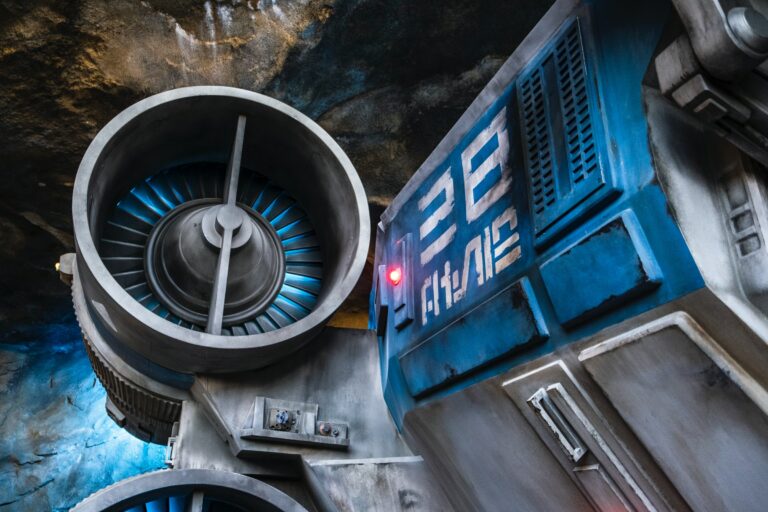Reading Practice: Designing Spaceships

Here’s where you can download Reading Practice texts and professionally made worksheets designed to test and improve your reading skills – all available for only a few Academic Marks. Each authentic reading text has been carefully selected to best improve academic reading skills through repetition and success.
Before you begin reading...
-
video and audio texts
-
knowledge checks and quizzes
-
skills practices, tasks and assignments
Category: The Space Race
Topic: Designing Spaceships
Difficulty: Intermediate-Advanced
Length: 1,279 words
Description: A discussion into the various factors that are important when designing spaceships and preparing for interstellar space travel.

The Space Race
Designing Spaceships
1 It is common for humanity to look up and ask questions about who or what is “out there”. The potential impact of such findings on our species and our many ideologies, customs and religions is overwhelming. With the famous moon landing of 1969, it was hoped and believed that some of these wonderments would have been answered by now – but in reality, this has not been the case. In fact, for many scientists and engineers, it has always been known that the space race was going to be slow. While nations and even companies may have competed (and succeeded) to leave Earth’s atmosphere behind, the science and technology that will get us much beyond the moon is still considerably lacking.
2 Nevertheless, the importance of space travel and the desire to continue to make progress in this area is very much alive. If our species is to survive, evolve and expand for millennia to come, we must be able to traverse vast distances and light years of time. It is through innovation, intelligence and collaboration that small but sure steps toward solving the many challenges of space travel are being placed. In consideration of the many feats that burden our brightest space engineers and scientists, this article first provides a brief overview of the stages of designing a successful spacecraft before then exploring in more detail one of the most challenging hurdles of extended space travel: sheer, unfathomable distance.
3 The Payload. As with designing any product, the first step in designing a spacecraft is to first simply establish its purpose. To do this, space engineers focus primarily on what is known as ‘payload’. The payload is whatever or whomever the spacecraft being designed is intended to transport. In terms of what, this may be scientific technology, such as NASA’s Perseverance Rover exploring Mars or the Juno Orbiter on Jupiter. Of course, if the payload includes living beings such as humans, then this will greatly impact the design considerations.


4 The Design. Once the mission has been established, engineers must next consider design and construction. It is their responsibility to explore, test, eliminate and select the most cost-effective materials that meet the requirements of the mission. At a basic level for space exploration, materials that can withstand extreme temperatures and velocities, while also being as light as possible, will be needed, and if the payload has life on board, such materials will need to protect against harmful radiation and support life-in-a-vacuum too. Each of these variables will of course impact and interact with the general craft design in terms of aerodynamics, size and landing features.
5 In addition to a spacecraft’s external materials and design, if the payload does indeed contain life, then the scientists and engineers working on the project must collaborate to consider the most effective approaches to sustaining that life for as long (and as comfortably) as possible. As outlined by NASA themselves, there are three overlapping life-support systems that must be designed:
1. Environmental Monitoring
- to monitor and maintain a constant pressure
- to monitor and maintain temperature and humidity
2. Atmosphere Management
- to produce oxygen and remove carbon dioxide
- to remove any volatile organic gases
- to maintain and monitor cabin ventilation
3. Water Management
- to store and possibly distribute potential water
- to recycle wastewater
- to use recycled water to produce oxygen
6 The Test. Once the design of a spacecraft has been more-or-less agreed, the next step is to test the design. While advances in computer programmes allow for increasingly sophisticated digital simulations, a design will always need to be tested in reality. To achieve this, engineers will test each component separately as thoroughly as possible. This may mean testing a wing or an outer-casing before deciding if that component is to be used in a final model. This limits the time spent on potentially nonviable products as well as the cost associated with building them – and, at the more extreme end, it minimises loss of life. Evidently, it takes committed and innovative engineers and scientists to design crafts which are fit for space. In fact, due to these considerations, the average time it takes to build a spaceship is seven years, with a range of four to ten years depending on the complexity of the project and any unexpected setbacks. This completion rate may also depend on advances in technology at the time, as well as sustained financial investments.
7 How far can we go? While humanity has survived the 240,000 mile (three-day) journey to the moon, the next stop on the horizon – Mars – is a massive 245 million miles further away. This would take at least nine months to reach for a passenger voyage using current technologies, and to reach anywhere farther afield would take many years. Therefore, how to traverse these distances within a timeframe that is meaningful to our species is currently one of the biggest challenges to the great space race, a hurdle that is currently impossible to overcome. The theoretical speed in which a spacecraft needs to travel in order to offer a sustainable option for humans is approximately 10% the speed of light. Currently, space travel is only at a tiny fraction of this speed, but in theory, scientists believe that it can be achieved.
8 To propel a spacecraft at the speed it needs to reach orbit (25,000mph) requires immense fuel – fuel which currently burns out very quickly. Scientists are therefore exploring alternative propulsion technologies. One idea that has existed since the 1970s is the use of nuclear fusion. Nuclear fusion is a reaction in which two or more atomic nuclei are combined to form one or more different atomic nuclei and subatomic particles. The difference in mass between the reactants and products is manifested as either the release or the absorption of energy. At present, a team at the Princeton Satellite Systems in Plainsboro, New Jersey, are working on what they have coined a ‘Direct Fusion Drive’ (DFD). Not only could the DFD half current exploration time, but the team also claim that it will be released by 2028.
9 Other alternatives are also being investigated, including an antimatter rocket. Scientists have known for some time that when a matter particle collides with an antimatter particle, they annihilate each other, releasing an immense amount of energy. Theoretically, if an antimatter rocket were to be created, it should be able to propel a spacecraft significantly faster than any other current theoretical method. NASA, for example, could send probes to the farthest edges of our solar system that would reach their destination within a year. Proponents of such technology claim that it could make humans an interstellar species.

So why has it not yet been used? Scientists currently have to create antimatter themselves as it does not appear to exist in our natural resources. This creation takes masses of energy, and it is also difficult to then store the generated antimatter. Because of these issues combined, the antimatter rocket is an incredibly expensive research project, and despite hopes that it would have been close to completion by 2020, research remains ongoing.
10 These are but two solutions to only one of space travel’s significant hurdles. There are of course other significant challenges that must also be solved. If we are to transport life, for instance, how do we protect our fragile bodies from cancerous radiation? How do we create life-support systems that can replenish? And, if we are to make serious progress, how do we build significant enough space stations from which to launch these spacecrafts, reducing energy expenditure during take-off? We continue to look to our scientists and engineers for these answers.
Word count: 1,279
Collect Academic Marks
-
100 Marks for joining
-
25 Marks for daily e-learning
-
100-200 for feedback/testimonials
-
100-500 for referring your colleages/friends